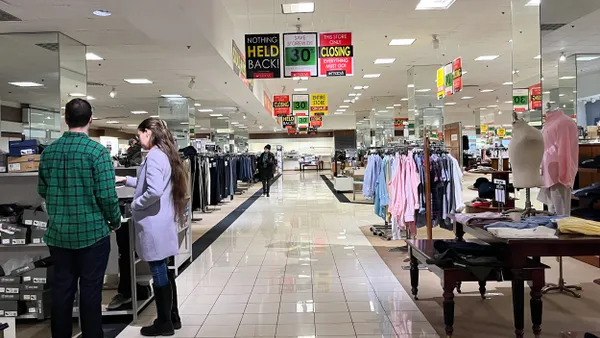Businesses need to evaluate the potential impact of tariffs many expect to be levied by the incoming presidential administration, including examining changes to supply chains and cost structures, PricewaterhouseCoopers partners said during a roundtable about post-election economic impacts this week.
As PwC evaluates how tariffs might affect client firms, “frequently, the tariff increases are larger than the company's current annual profits,” said Brett Cayot, U.S. principal of operations transformation for the Big Four firm. “These realizations are raising a lot of questions like ‘How can I change my supply base? Can I move manufacturing?’”
In November, President-elect Donald Trump promised to enact tariffs on Mexico, Canada and China, imposing a 25% tax on all products entering the country from Canada and Mexico, and an additional 10% tariff on goods from China.
In response to these developments, companies are expected to shift their supply chain footprints, much like when they moved from China towards Mexico in 2018, Cayot said.
In PwC’s most recent executive Pulse Survey from October, prior to the election, 75% of respondents said they agree or strongly agree that a 10% universal tariff on imports would significantly hinder their growth.
If alternative proposals are considered — including those which levy a 60% tariff on goods from China and a 25% tariff on goods from Mexico or Canada — the impact increases substantially, with tariff increases by as much as $800 billion annually according to PwC projections, Cayot said during the roundtable. (This estimate doesn’t account for duty reduction processes.)
As a result, businesses should carry out their own analyses about how tariffs could affect them, said Rohit Kumar, PwC’s U.S. National Tax Office leader.
“These tariffs are here. They're coming. They're going to stay,” said Kumar.
Tapping tech for improved supply chain efficiency
Early adopters of “next generation technology” will be better placed to adapt to disruptions, PwC experts said.
“They’re finding new ways for value creation,” said Cayot. Companies should “get a handle on what your potential impact is, and be able to actually pinpoint down to your highest exposure areas, then extend this into a true supply chain digital twin,” he added, noting that this could be a good use case for AI and machine learning. In turn, companies can consider alternative supply chain lines where necessary.
Businesses should also consider new business models and how to make supply chain operations leaner, said Cayot.
Companies should “start implementing no-regret cost out opportunities across the business,” noting that the leanest companies will be best prepared to navigate and sustain a competitive advantage, he said. “When there's disruption, you need to ask yourself the question of, where could I be disrupted, or where could I disrupt the market?”
But until the new rules are put in place, uncertainty over tariff implementation will continue to preoccupy companies.
“At the moment, companies are really challenged. They know that they need to do something. They just don't know what, because of all of the uncertainty and open questions,” Cayot said.
Editor’s note: This article has been corrected to state tariffs could rise by as much as $800 billion annually. The article previously stated tariffs could jump by $1.2 trillion.













